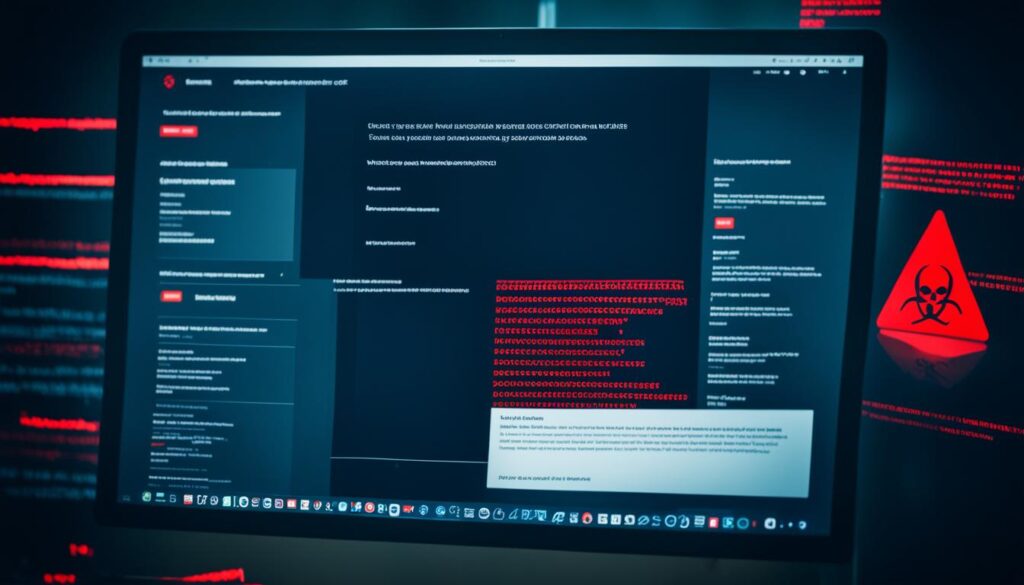Are you prepared to navigate the uncertainties and challenges that can impact your business? In a dynamic market like the Philippines, having effective risk management training is essential to ensure the success and sustainability of your organization.
Risk management training equips businesses with the necessary skills and knowledge to identify, assess, and mitigate risks. It goes beyond just anticipating potential losses – it helps you save time and money, protect your reputation, maintain trust with stakeholders, and ensure compliance with regulations and laws. By investing in risk management training, you can proactively approach risk and position your business for long-term success.
So, how can risk management training benefit your business? What are the key strategies for risk mitigation in the Philippines? Join us as we explore the importance of risk management training and discover effective ways to navigate uncertainties in today’s ever-changing business landscape.

Key Takeaways:
- Risk management training plays a crucial role in the success and sustainability of businesses in the Philippines.
- Effective risk management helps prevent potential losses, protects reputation and brand value, maintains trust with stakeholders, and ensures compliance with regulations.
- Investing in risk management training is a proactive approach that helps businesses navigate uncertainties and thrive in challenging environments.
- Risk management training equips businesses with the skills and knowledge to identify, assess, and mitigate risks, ensuring long-term success.
- By implementing risk mitigation strategies, businesses can save time and money, protect their reputation, and maintain compliance with regulations and laws.
Understanding Risk Management and Its Necessity in Business
Risk management is a fundamental process that allows businesses to identify, assess, and effectively manage potential risks that can impact their operations. In the corporate world, risk encompasses various events or circumstances that can lead to harm, loss, or negative consequences for an organization. Such risks can include financial instability, operational challenges, compliance issues, reputational damage, and more.

The Concept of Risk in the Corporate World
In the context of businesses, risk refers to the possibility of facing adverse events or experiencing negative outcomes that can hinder growth, profitability, and overall success. It is essential for companies to have a thorough understanding of the risks they face in order to develop effective strategies for risk mitigation and protection.
The Significant Role of Risk Management Training
To effectively manage risks and navigate through uncertainties, organizations need their employees to possess the necessary skills and knowledge. This is where risk management training plays a crucial role. By providing comprehensive training programs, businesses can empower their workforce to identify potential risks, assess their impact, and implement proactive measures to mitigate them.
Risk management training helps businesses establish robust risk management frameworks and processes. It enables employees to implement risk control measures and promote a culture of awareness and responsibility. With well-trained staff, organizations can enhance their risk management capabilities and ensure a proactive approach to risk mitigation.
Identifying Types of Risk in the Workplace
Every workplace faces various types of risks that can impact its operations, safety, and reputation. It is important to categorize and identify these risks to develop targeted risk management strategies.
Categorizing Different Risks Faced by Businesses
When it comes to workplace risks, businesses need to consider a wide range of factors. Here are some common types of workplace risks:
- Physical health and safety risks: These include hazards that can cause injuries or illnesses to employees, such as accidents, falls, or exposure to harmful substances.
- Human resources compliance risks: Businesses need to comply with labor laws, regulations, and policies to avoid legal and financial consequences. Examples include violations of employment contracts, discrimination, or non-compliance with health and safety regulations.
- Employee mental health risks: Poor mental health can impact employee well-being, productivity, and engagement. These risks can arise from work-related stress, inadequate support systems, or a lack of work-life balance.
- Criminal risks: The workplace may face criminal risks such as theft, fraud, or cyberattacks. These risks can result in financial losses, compromised data security, or damaged reputation.
- Operational risks: Operational risks refer to risks arising from ongoing business activities. They can include supply chain disruptions, equipment failures, or process inefficiencies.
- Brand reputation risks: Any risk that can damage a business’s reputation, such as negative customer experiences, product recalls, or public scandals, falls into this category. These risks can have long-term consequences on customer trust and loyalty.
By categorizing and understanding these risks, businesses can implement specific risk mitigation measures that address the unique challenges they face. Workplace risk assessments are crucial for identifying and prioritizing these risks, allowing organizations to develop proactive strategies to manage and mitigate them.

Addressing Human Resources Compliance and Workplace Culture
Human resources compliance and workplace culture are crucial elements in managing risks within an organization. Compliance with labor laws, anti-discrimination policies, and health and safety regulations is essential to avoid legal and financial repercussions. Additionally, promoting a positive and inclusive workplace culture can enhance employee engagement, reduce turnover, and mitigate risks related to employee behavior and conflicts.
Effective risk management training equips HR professionals and managers with the necessary skills to address compliance issues, foster a positive work environment, and navigate employee relations challenges. By staying updated on relevant regulations and implementing risk mitigation strategies, businesses can create a safe and compliant workplace that prioritizes the well-being and satisfaction of their employees.
“Creating a culture of compliance and fostering a positive workplace culture are key components of risk management in any organization. By addressing human resources compliance requirements and nurturing an environment where employees feel valued and supported, businesses can mitigate potential risks and build a strong foundation for sustainable growth.”
Implementing risk mitigation strategies within the human resources function involves various elements, such as:
- Establishing clear policies and procedures that align with legal requirements
- Providing regular compliance training and education to employees
- Ensuring fair and equitable practices in areas like recruitment, hiring, and promotions
- Promoting diversity, inclusion, and equal opportunity within the workplace
- Creating channels for employees to report concerns or grievances without fear of retaliation
- Developing conflict resolution mechanisms and fostering open communication
By focusing on these aspects, organizations can strengthen their risk management frameworks, improve overall workplace culture, and foster an environment where employees are engaged, motivated, and committed to the success of the business.
| Risk Mitigation Strategies | Benefits |
|---|---|
| Promote compliance with labor laws, anti-discrimination policies, and health and safety regulations | Avoid legal and financial repercussions, maintain a positive reputation |
| Create a positive and inclusive workplace culture | Enhance employee engagement, reduce turnover, mitigate employee behavior and conflict risks |
| Establish clear policies and procedures, provide compliance training | Ensure employees are aware of and adhere to legal and ethical requirements |
| Promote diversity, inclusion, and equal opportunity | Foster innovation and creativity, enhance employee satisfaction and well-being |
| Develop conflict resolution mechanisms and open communication channels | Address issues promptly, prevent escalation, maintain a harmonious work environment |
Enhancing Employee Mental Health through Risk Strategy Training
Employee mental health is a critical aspect of risk management in the workplace. High levels of stress and burnout can lead to decreased productivity, increased absenteeism, and employee turnover. Risk strategy training helps organizations identify stress points and implement measures to mitigate employee burnout.
Creating a supportive work environment, promoting work-life balance, providing mental health resources and support, and fostering open communication and feedback channels are crucial in prioritizing employee mental health. Organizations can improve overall well-being, productivity, and retention rates by addressing the mental health needs of their employees.

Identifying Stress Points and Mitigating Employee Burnout
Risk strategy training enables businesses to identify the specific stress points and factors that contribute to employee burnout. By understanding these stressors, organizations can develop targeted strategies to address and mitigate them.
“Creating a supportive work environment is essential for employee well-being. In our organization, we provide flexible work hours, regular check-ins with employees, and access to counseling services. These initiatives have significantly reduced stress levels and improved employee morale.”
Implementing policies and practices that promote work-life balance, such as flexible work hours and remote work options, can help alleviate the pressures that contribute to burnout. Providing access to mental health resources and support, such as counseling services or employee assistance programs, allows employees to seek help and manage their mental health effectively.
Open communication and feedback channels also play a crucial role in mitigating employee burnout. Creating a culture where employees feel comfortable expressing their concerns and providing feedback can help identify and address potential stressors early on. Regular check-ins, performance reviews, and team meetings provide opportunities to discuss workload distribution, work challenges, and potential sources of stress.
By prioritizing employee mental health through risk strategy training, businesses can create a healthier and more productive work environment, leading to improved overall well-being and reduced burnout.
| Benefits of Risk Strategy Training for Employee Mental Health | Key Measures to Enhance Employee Mental Health |
|---|---|
| 1. Decreased stress levels | 1. Create a supportive work environment |
| 2. Increased employee productivity | 2. Promote work-life balance |
| 3. Reduced absenteeism and turnover rates | 3. Provide mental health resources and support |
| 4. Improved employee morale and job satisfaction | 4. Foster open communication and feedback channels |
Risk Management Training’s Role in Mitigating Criminal Risks
Criminal risks, such as cyberattacks and corporate crime, pose significant threats to businesses in the digital age. Risk management training plays a crucial role in equipping organizations with the knowledge and skills to mitigate these risks. In particular, cybersecurity challenges, including data breaches and social engineering attacks, require proactive risk management strategies.
Training employees on cybersecurity best practices, implementing strong data protection measures, and staying updated on the latest threats and solutions are essential to safeguarding sensitive information and mitigating the risk of financial loss, reputational damage, and legal consequences.

Cybersecurity Challenges and Solutions
In today’s digital landscape, businesses face numerous cybersecurity challenges that demand effective risk management strategies. Data breaches, where unauthorized individuals gain access to sensitive information, can cause significant financial and reputational damage.
According to a recent study, the average cost of data breaches in 2020 was $3.86 million. Implementing robust risk mitigation strategies is crucial to prevent such incidents and protect businesses from malicious cyber activities.
One effective approach to mitigating data breaches is through comprehensive risk management training. This training equips employees with the skills to identify potential vulnerabilities, recognize suspicious activity, and implement best practices to safeguard sensitive data.
Furthermore, staying updated on the latest cybersecurity threats and solutions is essential. Regularly reviewing and updating security protocols, implementing multi-factor authentication, and conducting penetration testing are some strategies that can strengthen cybersecurity defenses.
| Cybersecurity Challenge | Solution |
|---|---|
| Data breaches | Implement strong data encryption, use secure authentication methods, and educate employees on data security protocols. |
| Social engineering attacks | Train employees on recognizing and responding to phishing attempts, implement multi-factor authentication, and regularly update security measures. |
| Malware and ransomware | Deploy robust antivirus software, regularly back up data, and educate employees on safe browsing and download practices. |
By investing in risk management training and staying proactive in addressing cybersecurity challenges, businesses can significantly reduce the risk of falling victim to criminal activities and safeguard their valuable assets.
Operational Excellence Through Effective Risk Management Courses
Operational excellence is a key goal for businesses seeking to optimize their processes and achieve higher efficiency and productivity. In today’s competitive landscape, organizations must be proactive in identifying and mitigating operational risks to maintain a competitive edge. This is where effective risk management courses play a crucial role.
Risk management courses provide businesses with the tools and strategies necessary to identify, assess, and mitigate operational risks. By understanding potential risks and their potential impact, organizations can implement appropriate mitigation measures. This helps optimize workflows, streamline operations, reduce costs, and improve overall performance.
Risk management training also helps organizations develop a culture of continuous improvement and operational excellence. By equipping employees with the knowledge and skills to manage risks effectively, businesses can foster a proactive and risk-aware mindset throughout the organization. This mindset encourages employees to identify and address operational risks promptly, ensuring that potential issues are resolved before they escalate.
Additionally, risk management courses often include comprehensive risk assessment programs that enable businesses to identify and prioritize risks based on their severity and likelihood of occurrence. This allows organizations to allocate resources and focus their efforts on the most critical risks, further enhancing operational excellence.
With proper training and risk mitigation strategies in place, businesses can optimize their processes, minimize disruptions, and improve their ability to seize opportunities. Operational excellence achieved through effective risk management courses can directly contribute to the long-term success and sustainability of businesses in the Philippines.
Improving Brand Reputation with Industry-Specific Risk Seminars
Brand reputation is a critical asset for businesses, influencing consumer trust, loyalty, and purchasing decisions. To mitigate brand-related risks effectively, organizations can benefit from industry-specific risk seminars. These seminars provide tailored insights and strategies that enable businesses to safeguard and enhance their brand reputation.
Customer Service and Product Quality as Brand Risk Factors
A brand’s reputation can be significantly influenced by customer service and product quality. Positive customer experiences and prompt resolution of issues contribute to customer satisfaction and trust in the brand. On the other hand, poor customer service or low product quality can lead to customer dissatisfaction, negative reviews, and potential damage to the brand’s reputation.
Risk mitigation strategies that focus on customer service and product quality play a vital role in protecting and enhancing a brand’s reputation. By investing in risk management training, businesses can equip their employees with the necessary knowledge and skills to deliver exceptional customer service, maintain high product quality standards, and proactively address issues that may arise.
Risk management training empowers employees to understand the critical factors that can impact a brand’s reputation and implement proactive measures to prevent any potential risks. By prioritizing customer satisfaction and product quality control, businesses can build a strong and trusted brand image.
Furthermore, risk management training also helps businesses identify potential risks related to customer service and product quality. By conducting comprehensive risk assessments and implementing risk mitigation strategies, businesses can minimize the likelihood of negative incidents occurring and effectively manage any risks that may arise.
Overall, by investing in industry-specific risk seminars and implementing risk mitigation strategies, businesses can protect and enhance their brand reputation, gaining a competitive edge in the market and improving their long-term sustainability.
Preparing for Natural Disasters and Unforeseen Events
Natural disasters and unforeseen events can have a devastating impact on businesses, disrupting operations and posing significant risks to their continuity. To mitigate these risks, organizations must be proactive in developing business continuity strategies through effective risk management planning. This involves assessing vulnerabilities, creating emergency response plans, establishing communication protocols, and implementing disaster recovery measures.
One important lesson learned from the recent COVID-19 pandemic is the necessity of having robust crisis management plans in place. The pandemic highlighted the need for businesses to be prepared for unforeseen events that can threaten the resilience and survival of their operations.
Business Continuity Strategies in the Face of Pandemics
Pandemics, like the COVID-19 outbreak, present unique challenges to businesses. The ability to maintain operations and provide essential services during such crises is crucial. To ensure business continuity, organizations must have strategies in place that address the specific risks and challenges posed by pandemics.
Key components of business continuity strategies in the face of pandemics include:
- Remote Work Readiness: Establishing the infrastructure and policies necessary to support remote work capabilities, ensuring employees can continue working from home if physical workplaces are inaccessible or unsafe.
- Supply Chain Resilience: Diversifying supply chains, identifying alternative suppliers, and establishing contingency plans to mitigate disruptions caused by global health crises.
- Risk Communication: Implementing clear and effective communication protocols to keep employees, customers, and stakeholders informed during pandemics, ensuring accurate and timely information is shared.
- Health and Safety Measures: Implementing comprehensive health and safety protocols, such as enhanced cleaning procedures, social distancing measures, and the provision of personal protective equipment, to protect employees and customers.
- Financial Preparedness: Building financial resilience by establishing cash reserves and exploring financial assistance options available during crises.
By incorporating these strategies into their risk management planning, businesses can enhance their preparedness and response capabilities, ensuring the continuity of operations and minimizing the impact of pandemics on their bottom line.
| Benefit | Business Continuity Strategy |
|---|---|
| Reduces operational disruptions | Assessing vulnerabilities and implementing emergency response plans |
| Ensures effective communication | Establishing communication protocols |
| Protects employee and customer health | Implementing health and safety measures |
| Minimizes financial impact | Building financial preparedness |
By investing in risk management planning and implementing business continuity strategies, businesses can safeguard their operations and mitigate the risks posed by natural disasters and unforeseen events. The ability to adapt and respond in challenging times is crucial for business sustainability and long-term success.
Conclusion
Risk management training is an essential investment for businesses in the Philippines. It enables them to effectively identify, assess, and mitigate risks that can impact their operations, reputation, and bottom line. By equipping employees with the necessary skills and knowledge, risk management training enhances risk awareness and fosters a culture of risk responsibility.
From addressing compliance issues and fostering a positive workplace culture to mitigating cybersecurity risks and preparing for unforeseen events, risk management training provides businesses with a proactive approach to navigate uncertainties in dynamic markets. This training enables businesses to develop targeted risk mitigation strategies tailored to their specific challenges, ensuring long-term sustainability and success.
By prioritizing risk management training, businesses can actively manage risks and minimize potential losses. This proactive approach not only protects their brand reputation but also builds trust with stakeholders. Additionally, risk management training ensures compliance with regulations and laws, reducing the risk of legal consequences. Overall, risk management training is a vital tool for businesses in the Philippines to navigate uncertainties and thrive in a rapidly changing business landscape.
FAQ
What is the role of risk management training in the success of businesses in the Philippines?
Risk management training plays a crucial role in equipping businesses in the Philippines with the necessary skills and knowledge to identify, assess, and mitigate risks. It helps businesses save time and money by preventing potential losses, protects their reputation and brand value, maintains trust with stakeholders, and ensures compliance with regulations and laws.
What is risk management?
Risk management is the process of identifying, assessing, and managing potential risks that can impact a business. In the corporate world, risk refers to any event or circumstance that can cause harm, loss, or negative consequences to an organization. This can include financial risks, operational risks, compliance risks, reputational risks, and more.
Why is risk management training necessary?
Risk management training is necessary to develop the skills and knowledge required to effectively identify and mitigate risks. It helps businesses establish risk management frameworks, implement risk control measures, and create a culture of risk awareness and responsibility among employees.
What are some common types of workplace risks?
Some common types of workplace risks include physical health and safety risks, human resources compliance risks, employee mental health risks, criminal risks, operational risks, and brand reputation risks.
How does human resources compliance and workplace culture impact risk management?
Compliance with labor laws, anti-discrimination policies, and health and safety regulations is crucial to avoid legal and financial repercussions. Additionally, promoting a positive and inclusive workplace culture can enhance employee engagement, reduce turnover, and mitigate risks related to employee behavior and conflicts.
Why is employee mental health important in risk management?
Employee mental health is a critical aspect of risk management in the workplace. High levels of stress and burnout can lead to decreased productivity, increased absenteeism, and employee turnover. Risk strategy training helps organizations identify stress points and implement measures to mitigate employee burnout.
How does risk management training help mitigate cybersecurity risks?
Criminal risks, such as cyberattacks and corporate crime, pose significant threats to businesses in the digital age. Risk management training plays a crucial role in equipping organizations with the knowledge and skills to mitigate these risks. Training employees on cybersecurity best practices, implementing strong data protection measures, and staying updated on the latest threats and solutions are essential.
How does risk management contribute to operational excellence?
Effective risk management courses provide organizations with the tools and strategies to identify operational risks, assess their impact, and implement mitigation measures. By proactively managing operational risks, businesses can optimize their workflows, streamline operations, reduce costs, and improve overall performance.
How can industry-specific risk seminars help improve brand reputation?
Industry-specific risk seminars provide organizations with tailored insights and strategies to mitigate brand-related risks. By focusing on customer satisfaction, resolving issues promptly, and ensuring product quality control, businesses can protect and enhance their brand reputation.
How can businesses prepare for natural disasters and unforeseen events?
Risk management training enables organizations to prepare for such events by developing business continuity strategies. This includes assessing vulnerabilities, creating emergency response plans, establishing communication protocols, and implementing disaster recovery measures.
Why is risk management training important for businesses in the Philippines?
Risk management training is crucial for businesses in the Philippines to effectively identify, assess, and mitigate risks that can impact their operations, reputation, and bottom line. It enhances risk awareness, develops targeted risk mitigation strategies, and creates a culture of risk responsibility among employees.

Leave a Reply